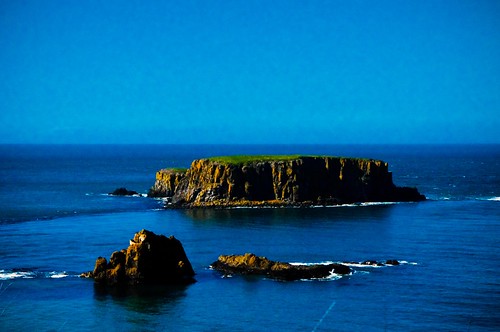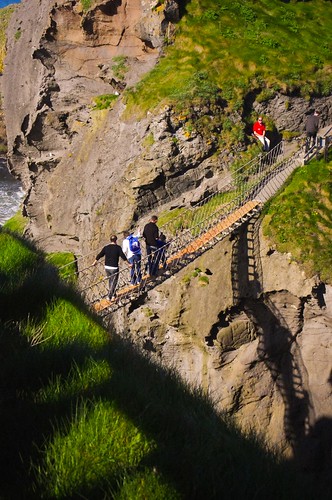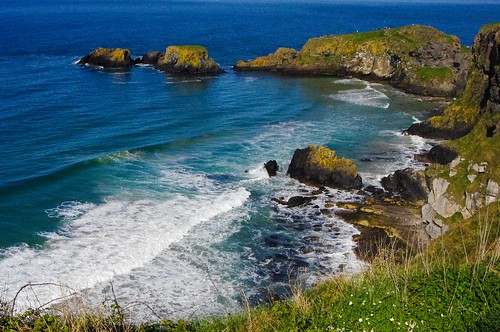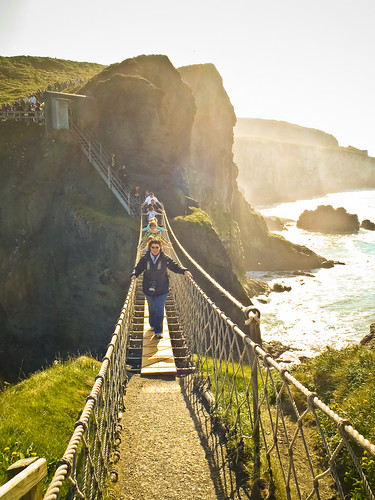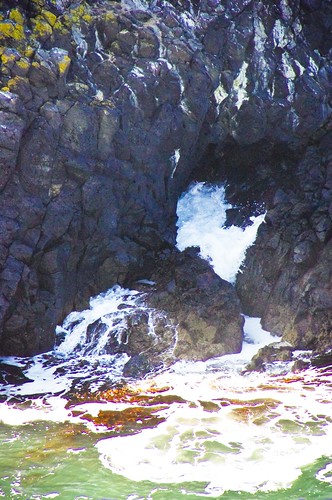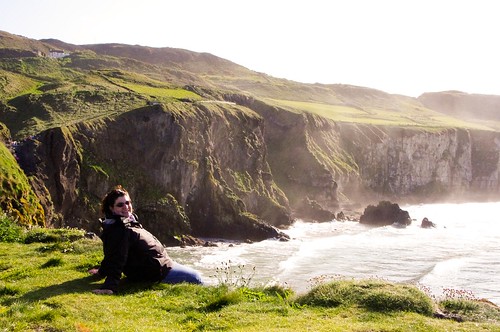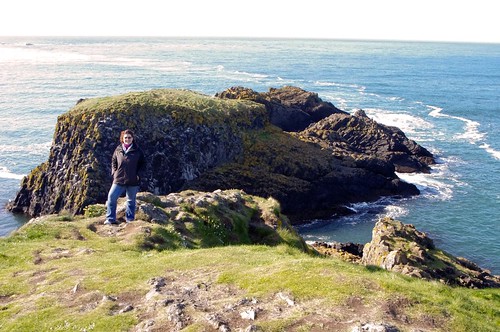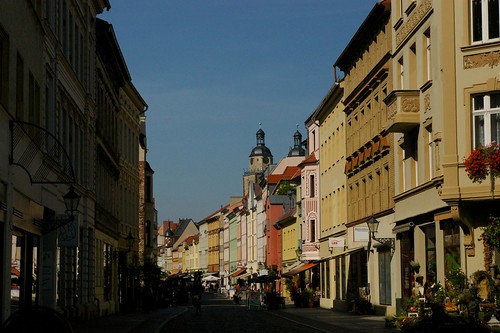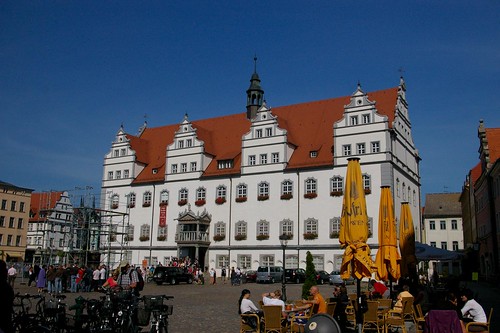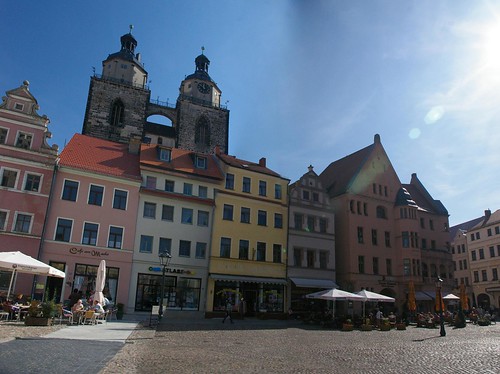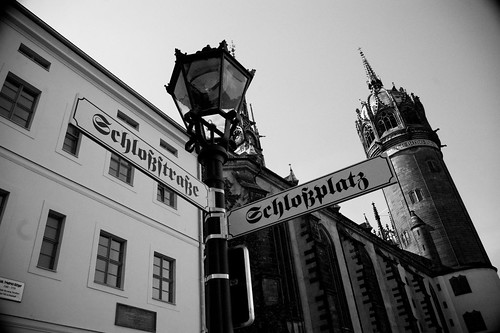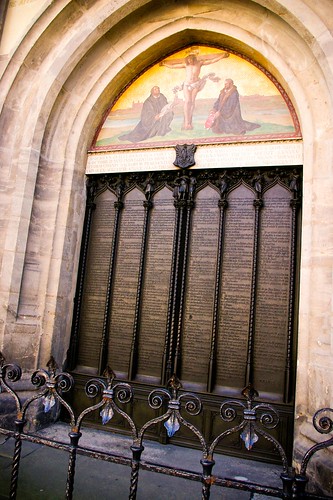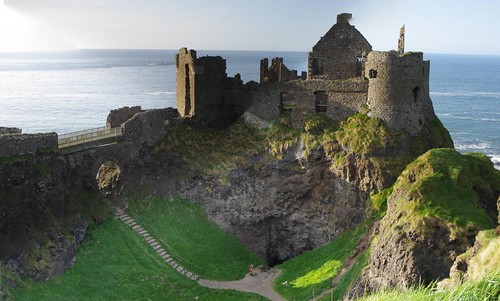
Just before sunset, back in April, as part of our day trip around Northern Ireland, Jacqui, Liz and I popped along the coast road in the hopes of making it up to DunLuce castle ruins. This is supposed to be one of the most beautiful cliff face castles that spans its own small island and then connects to the mainland by a bridge and dual gatehouses. I have to say that it was great for photographs, and because of the “Sweet light” hours that we made it, we got some neat shadow pictures too.
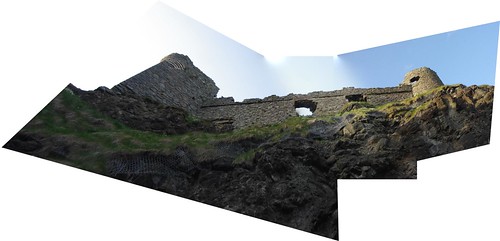
The first castle was built on the site sometime in the 1200’s, high up on the cliffs on the coast. Prior to this, there may have been an ancient fort here as well. The remnants of which can be seen in the two round towers, 30 foot in diameter.
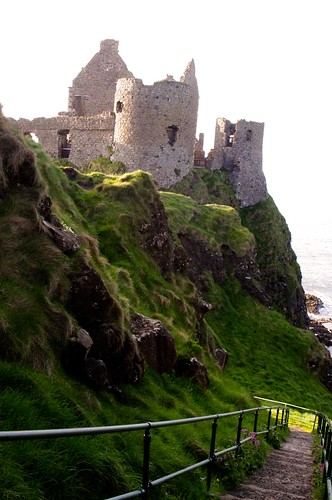
The first documented castle on the site was built in 1513, by the McQuillin family, using the remains of prior structures. It was updated in 1584, after a change of hands to Scottish lords, to the latest Scottish styles, adding the gatehouses and separate kitchens.
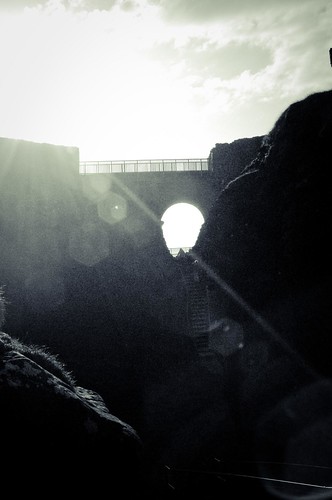
According to a history, sometime after 1584, part of the cliff face collapsed into the sea and took down the kitchen buildings with it. Supposedly, only one lucky kitchen boy survived – because he was sitting in the corner of the kitchen which remained. At that time, the wife of the owner declared she would no longer live there.
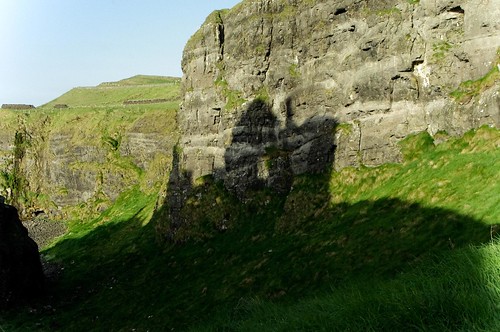
Sometime after 1690, the family owners lost their funds and the castle fell into disrepair.
Today, the castle is a privately owned tourist site, where you can walk around parts of the old castle grounds and down a steep set of stairs to look up at the castle above. Under the castle is a water carved cave (smugglers cove anyone)
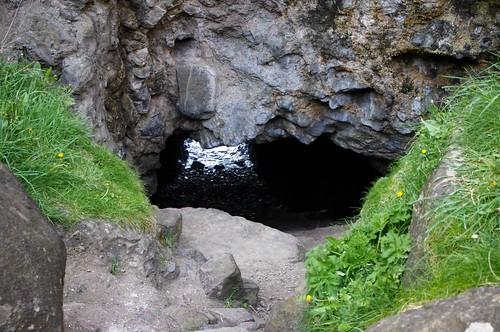
and a neat archway which allows for some great sunset silhouettes (and shadows.)
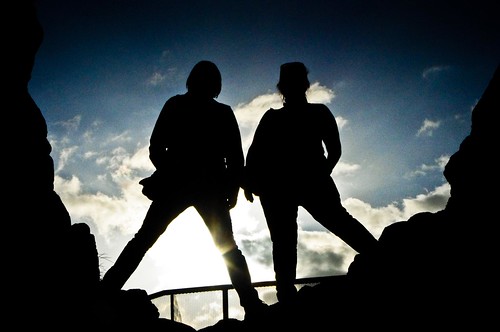
For a virtual tour, please see:

